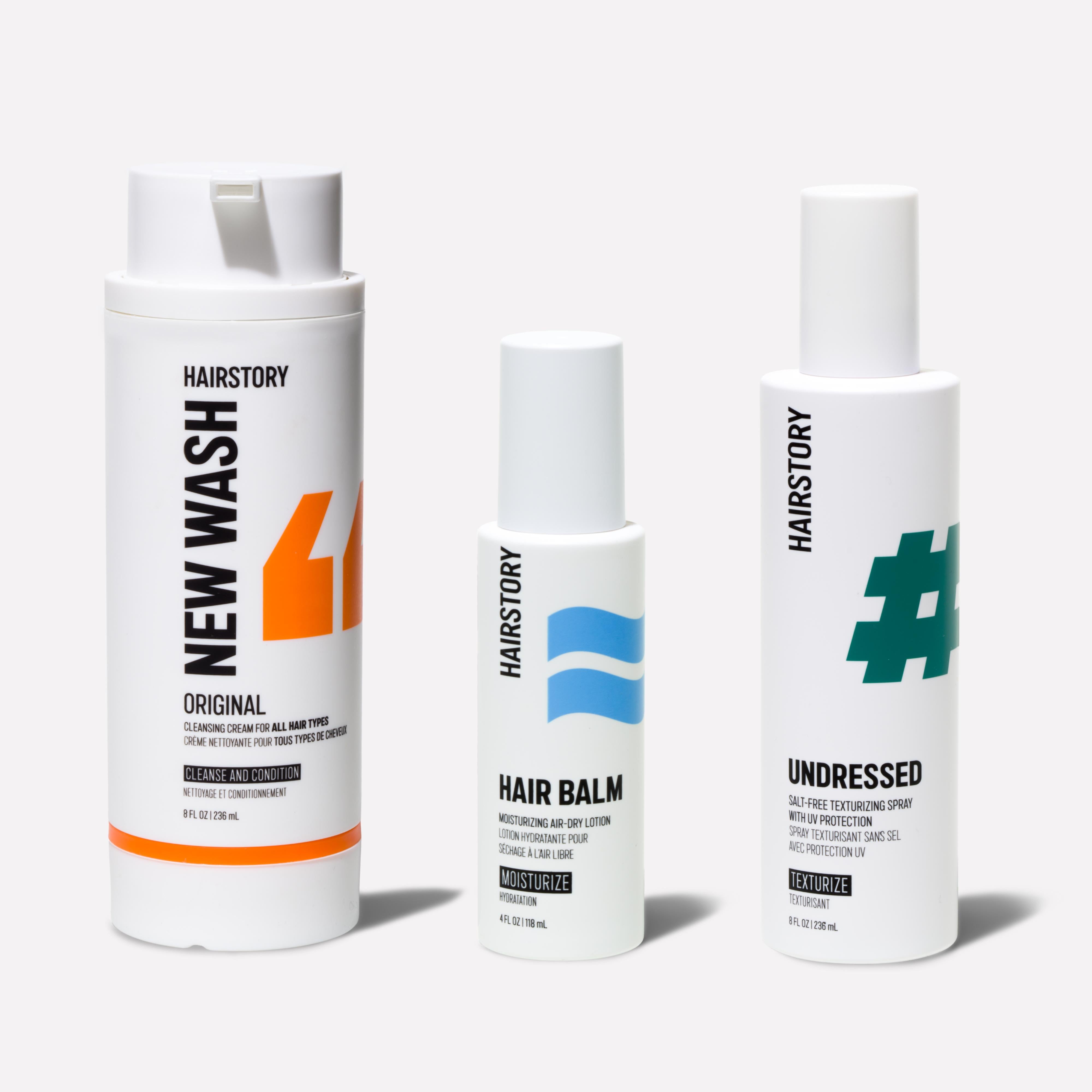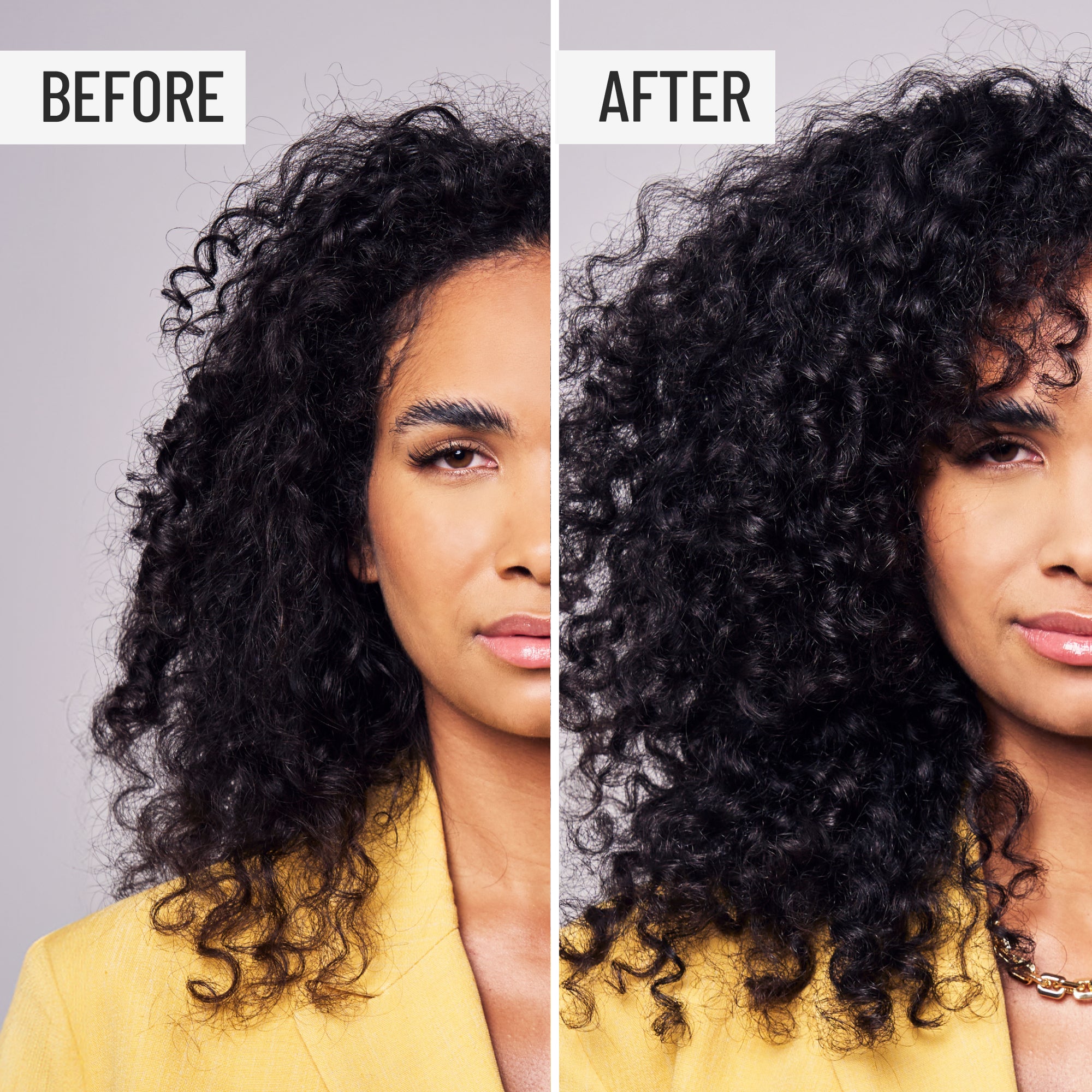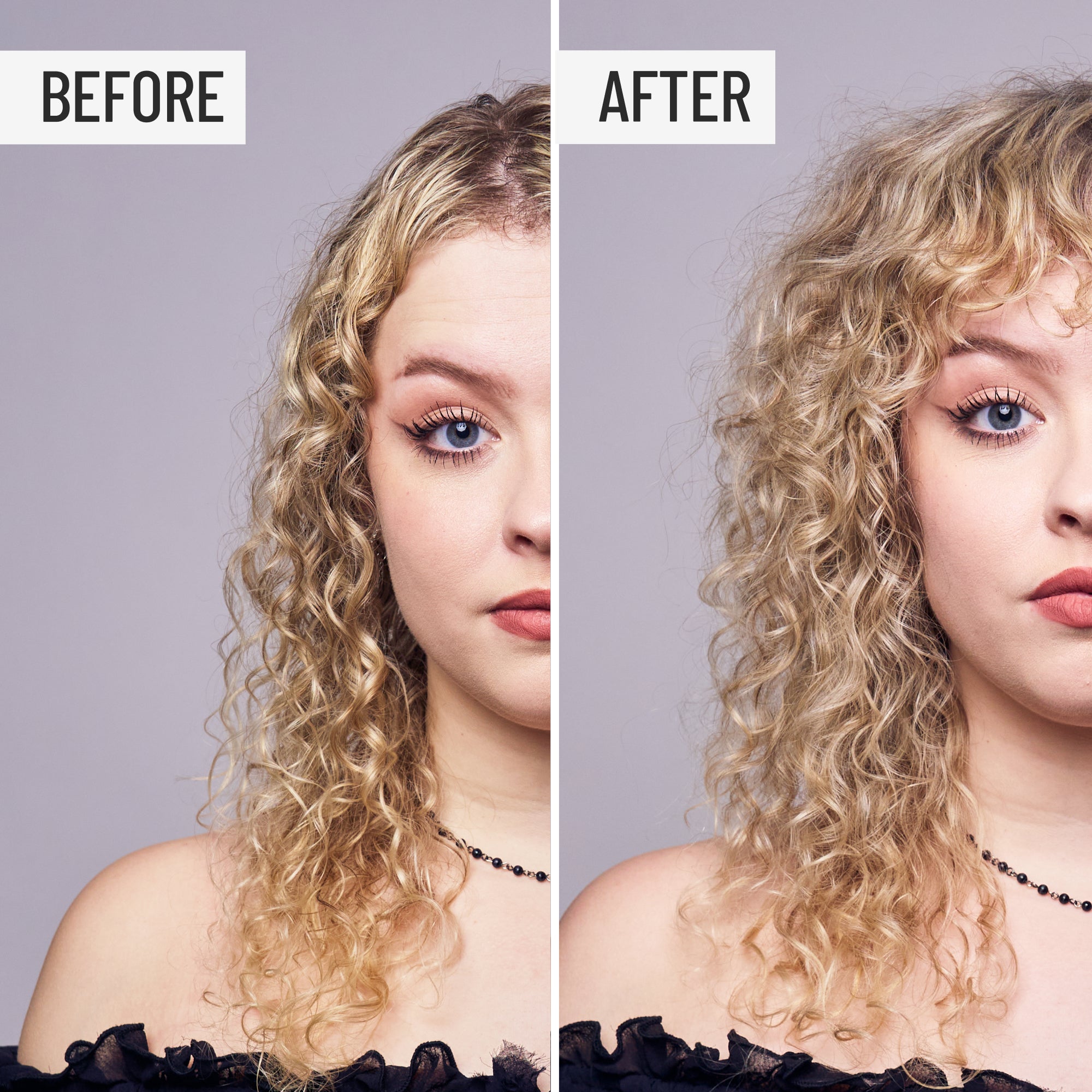You might have noticed a shift in the beauty industry towards natural and clean beauty. This growing movement is in response to a couple key shifts in culture including a more conscious consumer, the desire to move away from filler or potentially harmful ingredients and a larger wellness trend. Over the past decade stores like Credo and CAP Beauty and brands like goop and Drunk Elephant have emerged and established themselves as leaders within the clean beauty space.
The clean beauty macro trend touches upon all beauty and personal care categories including cosmetics, skincare, haircare and nails. Clean beauty has spurred the creation of new brands in this space, prompting existing brands to take a look at their ingredients and reevaluate what’s necessary and what is simply filler. In haircare, there are many unnecessary ingredients that have remained in hair products for decades. One particular group of ingredients, sulfates, have caused a lot of controversy over their place within hair products. We’re breaking down everything you need to know about sulfates in relation to your hair, how they work and why they’re not helpful ingredients.
WHAT ARE SULFATES?
In order to address sulfates, let’s first talk about what they are. Let’s go back to your high school science class. Sulfate is a salt that forms when sulfuric acid reacts with another chemical; and it’s a broader term for other synthetic sulfate-based chemicals. Sulfates are detergents which are cleansing agents known as surfactants. A surfactant is a surface active agent—a substance which reduces the surface tension between two liquids. Surfactants are able to do this because of their chemical structure: featuring two ends where one attaches to water (hydrophilic) and the other attaches to oil, grease and dirt (hydrophobic). Surfactants act as a wetting agent so that water spreads easier and is more likely to interact with oil and grease versus interacting with itself. In simpler terms, Dr. Y. Claire Chang told Byrdie, “Sulfates encompass a large group of synthetic ingredients found in many personal care products, like body washes, facial cleansers, soap, shampoo, and toothpaste. Sulfates include sodium lauryl sulfate, ammonium lauryl sulfate, and sodium laureth sulfate." Prior to the last decade, nearly every personal care product contained sulfates. “Sulfates, which have been in used in personal care products since the 1950s, are "the most commonly used detergents in the beauty industry,”" says cosmetic chemist Perry Romanowski to Teen Vogue. If you're still wondering, “What is detergent?” or want to discover more about the difference between shampoo and soap, check out our blog to learn more about this topic.
WHAT DO SULFATES DO?
Sulfates are some of the most common anionic detergents and they work to cleanse the hair of dirt, oil, grease and product buildup. They are the essential cleansing and foaming agent in many hair, body and personal care formulas. Let's take a deeper look at sulfate’s properties:
- Cleansing - Sulfates work to cleanse by removing dirt, oil, sebum, and more leaving the hair feeling clean and lightweight. According to Healthline, “compared to other cleansing ingredients in shampoo, sulfates are said to have the deepest cleansing effects.” Their hydrophobic head clings to dirt and oil which readies the impurities to be rinsed away. Also, because the sulfates are anionic it’s possible that they may cause an increase in electrical negative charges on the hair surface which can increase frizz and friction.
- Foam and Lather - Sulfates are great at creating a lot of foam really fast. Most of us are used to our hair products foaming and lathering when coming into contact with water. This reaction tells us the product is working—it’s cleaning your hair. The foamy texture helps the product spread more easily to cover the entire surface area of your hair. However, it’s entirely possible to have a sulfate-free hair cleansing product that doesn’t foam. It’s not what we’re used to, but sulfate-alternatives are still effective at cleaning.
- Thickening - Viscosity is important to how a product looks and feels. The texture of shampoo, for example, has an impact on how the consumer perceives the efficacy and quality of the product. Thickening is easy to achieve with sulfates and lauryl sulfate, in particular, can be thickened by adding salt. But in sulfate-free shampoo, thickening agents can be a bit more complicated and expensive.
- Affordable - Sulfates are sometimes referred to as “filler ingredients” because they are extremely cheap to make. Sulfates can be replaced with other less harmful ingredients with comparable cleansing abilities, but they’re traditionally more costly to produce. That’s why sulfate-free shampoos and products are usually more expensive than those with sulfates, and more than 90% of all shampoos contain sulfates.
SO, WHAT’S THE ISSUE WITH SULFATES?
When it comes to your hair, sulfates are amazing, deep cleaners. However, they happen to be too good at cleaning. You’ve heard from hair authorities like your stylist or magazine editors about how you should wash your hair less, and sulfates are one of the key reasons behind this movement.
One of the biggest issues with sulfates is that they can strip your scalp of its natural oils. Ultimately, using a shampoo containing sulfates over time can dry out your hair, cause your hair color to fade and lead to hair weakening and breakage.
Sulfates also commonly lead to dry scalp, dandruff, and in some cases cause skin and eye irritation.
Sulfates are also not ideal for those with sensitive skin. It’s possible that sulfates can cause skin reactions like dryness, redness and itchiness. "Sulfates can often dry out the skin, and some people find they may lead to more acne when their skin is in frequent contact with sodium lauryl sulfate,” explains David Lortscher, M.D., board-certified dermatologist and co-founder and CEO of Curology told Teen Vogue. See our blog to learn more about what is Sodium Lauryl Sulfate and its effect on your hair health.
MOST COMMON TYPES OF SULFATES FOUND IN SHAMPOO
Sulfates belong to the anionic detergent family which is characterized by a negatively charged head also known as the anion. In addition to hair care, other common types of anionic detergents include dishwashing liquids and powders, hand soaps or liquid soaps, toothpaste and laundry detergent. Essentially, sulfates are great for cleansing and removing sebum, dirt and other impurities. Let’s take a look at some of the most common sulfates found in hair care products.
- Sodium Lauryl Sulfate- Commonly referred to as SLS, Sodium Lauryl Sulfate is used in low concentrations and is one of the most used ingredients in personal care and hair care products. SLS can be made from petroleum oil, coconut or palm oil and works to trap oil and dirt in hair so it can be washed away. SLS can be found in higher concentrations in products like industrial cleaners like engine degreasers, floor cleaning solutions and car wash products. This chemical is also an extremely effective foaming agent and helps products achieve a foamy lather as seen in toothpastes, shampoos and body washes. Additionally the FDA includes SLS on its list of multipurpose additives that may be added to food.
- Sodium Laureth Sulfate - Despite the similar name, Sodium Laureth Sulfate (SLES) is not the same as Sodium Lauryl Sulfate (SLS). SLES is a milder cleansing agent due to a higher amount and different chemical structure of the fatty alcohols required to manufacture this cleansing agent. It can be found in hair and grooming products, oral care and other personal care products. SLES is another highly effective foaming agent, causing the classic sudsy lather we’ve come to expect from hair and personal care products. This chemical also acts as an emulsifier, meaning it keeps all the ingredients mixed together to retain the consistency of the formula.
SLES is created by the ethoxylation (a chemical reaction) of palm oil or coconut oil. The use of palm oil itself is another controversial topic, concerning the rapid demand for palm oil which comes at the destruction of tropical forests which are habitats for many endangered species.
- Ammonium Lauryl Sulfate - Also similarly named to SLS and SLES, Ammonium Lauryl Sulfate (ALS) has a slightly more complex structure and is physically larger with a heavier molecular mass (especially compared to SLS). This makes it difficult for ALS to penetrate deep into the skin reaching those vulnerable skin cells which makes it less irritating. Like SLES, ALS is also considered to be a gentle cleansing and foaming agent, an emulsifier and is made from coconut or palm oil. It can primarily be found in shampoos and shower gels.
ARE THERE BIGGER ISSUES TO WATCH OUT FOR?
- Health Concerns - There are a lot of misconceptions when it comes to sulfates and their link to larger and scarier diseases like cancer. There was even a study conducted in 2015 published by the NCBI that states, “Since the early 1990s, misconstrued information on the human and environmental toxicity of SLS has led to consumer confusion and concern about the safety of SLS as an ingredient in household products.” The article also mentions that there is no scientific evidence to suggest that skin contact with SLS causes hair loss and no scientific evidence indicating that SLS is a carcinogen. So unfortunately it’s clear even to the academic medical community that there is a large amount of misinformation surrounding sulfates and their link to larger health concerns.
- Environmental Issues - Because sulfates can be derived from palm oil, they are contributing to the increasing demand for this resource. To keep up with demand, the palm oil industry has scaled rapidly, for example palm oil can be found in nearly 50% of the packaged products in supermarkets. According to Rainforest Rescue, palm oil is primarily harvested from palm trees that grow in rainforests. The deforestation of palm trees leads to “CO2 and methane emissions, palm oil-based biofuels actually have three times the climate impact of traditional fossil fuels.” Additionally, the palm oil industry is causing the destruction of important animal habitats, especially for endangered species.
- Animal Testing - Sulfate-containing products are largely tested on animals because that is how it’s known today that sulfates are irritants. Along with the clean beauty movement, animal testing is another extremely controversial topic within beauty. Over the past 10 years, we’ve seen a large shift in brands moving to cruelty-free and or vegan. Testing on animals is becoming antiquated and many consumers do not want to support brands that still continue this practice.
SULFATE ALTERNATIVES
We’ve covered the types of sulfates, their uses, and the controversy surrounding them. If you’re ready to make the jump to going sulfate-free here are some alternative ingredients to consider.
- Sodium Cocoamphoacetate- An amber liquid derived from coconut, this ingredient is a surfactant that allows water and oil to mix, allowing things to become clean. It also can increase the product’s capacity to foam and stabilize foam. Sodium cocoamphoacetate can be found in personal care products like shampoo, mousse, shaving cream, makeup and more.
- Cocamidopropyl Betaine (CAPB) - A naturally derived surfactant that’s sourced from coconut oil. This ingredient helps to create a rich, foaming lather and leaves the hair feeling soft and static-free. CAPB is also used as a thickening agent and is typically found in personal care products like shampoos, soaps, toothpaste, shaving cream and more.
- Lauryl Glucoside- Derived from palm kernel oil, corn sugar, or coconut, lauryl glucoside is a surfactant and a cleanser which helps to disperse the product so that it can clean effectively. You can find lauryl glucoside in shampoo, facial cleansers, sunscreen and more.
- Coco Glucoside- This ingredient is derived from coconut and can be used as a mild, natural foaming surfactant, emulsifier and conditioner. Coco glucoside also helps to create a foamy lather and is often found in skincare and haircare products.
WHAT YOU NEED TO KNOW ABOUT SULFATE-FREE SHAMPOO
Over the past decade more sulfate-free shampoo options have emerged. While you can still largely find shampoos with sulfates, there is a larger trend moving away from these ingredients. Sulfate-free shampoos are going to look and feel different than traditional shampoos. They are not going to foam and lather as much, again because sulfates are largely responsible for this property. You may also have to work a little harder to ensure the shampoo has covered your hair. The foaming benefit of sulfates allows the product to disperse easier and more thoroughly throughout the hair. With sulfate-free options, it might take slightly longer to disperse the product and fully coat your hair. And when you’re ready to rinse, make sure you take a little extra time to ensure the product is completely rinsed out of your hair. Sulfates work quickly to foam up, cleanse the hair, and then rinse out effectively leaving your hair with that squeaky-clean feeling. Sulfate-free shampoos won’t leave your hair feeling squeaky clean because that’s the product of oils being completely removed from the hair. Trust us, in the long run, your hair will thank you for making the switch. To learn more about why shampoo is bad for hair, check out our blog for more on this topic.
CHECKING YOUR PRODUCTS
Without much regulation, most beauty and personal care brands are able to get away with using nearly any ingredient they wish. There also is no universal standard for what is considered “clean” or “natural” beauty. This has prompted many retailers to create their own standards and guidelines for what they consider to be clean. Sephora for example now has a seal applied to every product page that meets the standards for its Clean at Sephora program. Target, Ulta and other retailers also have their own clean standards. They all largely include products that are free from parabens, sulfates including SLS and SLES, mineral oil, phthalates, talc, formaldehyde and more.
If you’re curious about the ingredients in products you use we encourage you to check out EWG’s Skin Deep ingredient database. They are a cosmetic database dedicated to empowering people with the knowledge to protect themselves and their families from everyday exposures to potentially toxic chemicals in personal care and beauty products. Skin Deep launched in 2004 and has since amassed information for nearly 70,000 products and 9,000 ingredients.
All of Hairstory’s products include EWG’s toxicity rating on each one of its ingredients. We’re proud of this transparency and hope that it educates and sheds a light on active ingredients versus filler ingredients. Our goal is to give you all the facts so you can make the best decision for you and your hair.
WHY HAIRSTORY IS DIFFERENT
At Hairstory, our approach to hair care seeks to challenge everything you’ve been taught about hair products. In our About Us introduction, we talk about asking the hard-hitting, provocative questions like is shampoo really the best way to wash your hair? and why are there so many types of shampoos for different hair types or issues? The short answer is: that’s been the way the hair care industry has operated for decades. We’re here to change the status quo and open up a new way of thinking about your hair products.
To put it simply, we don’t like the effects sulfates have on hair. So we sought to challenge the traditional products people use to wash their hair. This is how New Wash was born. New Wash is a detergent free shampoo that is able to cleanse in a gentle way, without sulfates or other detergents. New Wash features natural ingredients like essential oils and hair-friendly conditioning agents to give you hydrated, brilliant hair. Say goodbye to harsh ingredients that strip your hair of natural oils and cause weakening over time. It’s time to ditch your old wash routine and discover your healthiest hair ever. Explore New Wash and our styling products for expertly-crafted formulas that are created differently with ingredients your hair will love.
Sources:
Cherney, Kristin. “Should You Avoid Shampoos with Sulfates?.” Healthline, 3 July 2019, URL
Webster, Emma Sarran. “What is Sulfate? Understanding Sulfates and Sulfate-Free Products.” Teen Vogue, 16 April 2020. URL
“CFR - code of federal Regulations Title 21.” U.S. Food & Drug Administration, URL
“What Is Sodium Lauryl/Laureth Sulfate?.” The Honest Company, 14 October 2014, URL
Montell, Amanda. “Ask a Hairstylist: Are Shampoos With Sulfates Ever a Good Choice?.” Byrdie, 29 May 2020. URL
Julian, Alexandra. “ALS vs. SLS.” Greenpeople, 21 May 2020, URL
Bondi, C., Marks, J., Wroblewski, L., Raatikainen, H., Lenox, S., & Gebhardt, K. “Human and Environmental toxicity of sodium lauryl Sulfate (SLS): Evidence for safe use in household cleaning products.” NCBI, 17 November 2015, URL
Ingredient.” Greenmatters, 17 February 2020, URL
Hirsh, Sophie. “Is Palm Oil Bad? Everything You Need to Know About the Controversial
“Palm oil – deforestation for everyday products.” Rainforest Rescue, URL
“Sodium cocoamphoacetate.” Puracy, 1 April 2020, URL
“What Is Cocamidopropyl Betaine – Is It Safe?.” Puracy, 26 December 2020, URL
“Lauryl Glucoside.” Puracy, 18 April 2020, URL
“Coco Glucoside.” Puracy, 5 May 2020, URL
“EWG’s Skin Deep.” Environmental Working Group, URL
“Clean at Sephora.” Sephora, URL































